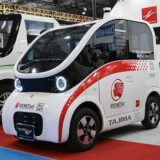
Germany’s EV transition slows despite overall auto market growth in 2023
In 2023, Germany’s shift towards battery-electric vehicles (BEVs) decelerated, as reported by the Federal Motor Transport Authority (KBA). The country registered approximately 524,219 new fully electric cars, an 11.4% increase from 2022, but a slowdown from the previous year’s one-third growth rate. This trend aligns with the gradual phasing out of state support for electric vehicles, according to specialist publication Electrive. The reduction of buyer’s premium in early 2023 and the subsequent elimination of electric company car support significantly impacted new registrations.
The abrupt end of government subsidies for EVs, following a budget crisis, caused a significant disruption in the market. Automakers responded with rebates to offset subsidy cuts. Despite these efforts, the goal of having 15 million electric vehicles, including plug-in hybrids, on German roads by 2030 appears increasingly challenging.
Another factor influencing the EV market is the increasing cost of new electric cars, which rose by more than EUR4,000 (USD4,379) to an average of EUR52,700 (USD57,702) in 2023. This price hike is slowing the transition to eco-friendly mobility. German and European carmakers face heightened competition from Chinese firms introducing more affordable models, while Volkswagen’s ID.2, priced under EUR25,000 (USD), is not expected until mid-2026.
Overall automotive market performance in 2023
The German auto market saw a mixed performance in 2023. New car registrations in December dropped by 23% compared to December 2022. However, the year ended with a 7.3% increase in new car registrations, totaling 2.84 million vehicles. Commercially registered cars constituted 67.1% of new registrations, a 12.4% increase, while private registrations decreased by 1.9%.
Popular brands and segments
German brands, particularly Smart, Audi, Mini, Mercedes, Porsche, and BMW, saw significant increases in new registrations. Volkswagen continued as the leading German brand with an 18.2% market share. Imported brands showed mixed results, with notable gains for GWM, Lotus, and Nio, while others like LEVC and Lada saw significant declines. Sport utility vehicles (SUVs) were the most popular segment, followed by compact and small cars.
Alternative drive types and CO2 emissions
Hybrid vehicles achieved a 29.5% market share, while plug-in hybrids saw a significant decrease. Electric cars held an 18.4% share, with a moderate increase. Liquefied gas and natural gas vehicles remained marginal. CO2 emissions from cars increased to an average of 114.9 g/km in 2023.
Commercial vehicles showed positive growth, with tractors, trucks, and buses all registering increases. The motorcycle market, however, experienced a slight decline.
Market outlook
The German automotive market’s landscape is evolving, with electric mobility at its core. Despite challenges, the market’s overall growth and the diversification of vehicle offerings signal a dynamic industry adapting to changing consumer preferences and environmental considerations.
The German automotive market’s landscape is evolving, with electric mobility at its core. Despite challenges, the market’s overall growth and the diversification of vehicle offerings signal a dynamic industry adapting to changing consumer preferences and environmental considerations.














